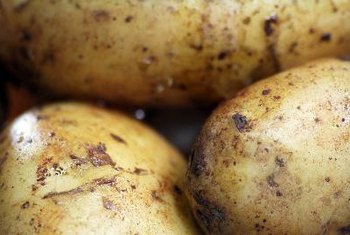Dr. Weeks’ Comment: What diet is healthiest? The one which includes the seeds and skin of organic food. For example, the seed naturally accumulates nutrients 20x more than the flesh the fruit and vegetable they grow in. And the skin of the orange has 2x more vitamin C than the fruit and the skin. Did you know that the pineapple contains bromelain, an enzyme that can help reduce inflammation. A pineapple’s core and peel yielded the highest amount of bromelainin the fruit, at 40 percent by weight. Watermelon seeds are one of the best nourishing snack you can eat to help keep your skin, hair, and fingernails healthy shiny. Its seeds contain zinc, iron, and fiber, and can have more than 10% protein, depending on the variety, and unsaturated fatty acids like oleic acid and linoleum acid. What about the potato? The skin is more nutritious than the flesh!
But remember: it has to be ORGANIC and non-GMO otherwise you are eating the MOST TOXIC part of the plant.
Does the Skin of a Potato Really Have All the Vitamins?

A potato skin contains significant nutrients, but so does the flesh, and determining which one has more isn’t as straightforward as you might expect. Potatoes are a rich source of fiber, iron, vitamin C and vitamin B-6, but to get the most nutrients you’ll need to eat the whole potato. The skin contributes more of some nutrients while the flesh has more of others.
Macronutrients
The skin from one whole baked potato has 115 calories and 27 grams of total carbohydrates, while the flesh delivers 145 calories and 34 grams of carbs. Both the skin and the flesh have about 3 grams of protein each, which is 5 percent of the recommended daily intake for men and 6 percent for women. The skin contains 5 grams of fiber, and you’ll get 2 grams of fiber from the flesh.
Vitamins
One whole baked potato has 66 percent of the recommended daily intake of vitamin B-6, 31 percent of vitamin C and 19 percent of thiamin. The flesh contributes 60 to 70 percent of the total amount of all three. You’ll get 23 percent of the daily intake of niacin, but the skin and flesh provide equal amounts. All of the B vitamins activate enzymes that participate in metabolism and energy production. Niacin also lowers cholesterol, and vitamin B-6 helps synthesize serotonin, which is a neurotransmitter that regulates mood, sleep and appetite. As an antioxidant, vitamin C inhibits inflammation and prevents cellular damage by neutralizing free radicals.
Minerals
Potato skins are a rich source of iron. One whole baked potato gives men 57 percent and women 25 percent of their recommended daily intakes, but the skin provides 88 percent of the total amount. You’ll also get 20 percent of the daily intake of potassium and 15 percent of magnesium. Sixty percent of the total for both comes from the flesh. In addition to transporting oxygen, iron helps make neurotransmitters and supports your immune system by regulating the growth of cells that fight pathogens. Potassium and magnesium carry electrical charges that stimulate muscle contraction and nerve transmission. Potassium maintains a regular heartbeat, while magnesium helps lower blood pressure by relaxing muscles in blood vessel walls.
A Portion-for-Portion Comparison
It doesn’t represent the amount of skin and flesh you would get in one whole potato, but another way to compare them is by considering an equal amount of each. One hundred grams of skins, which is about equal to the skin from two potatoes, has double the amount of seven nutrients, five times more riboflavin, seven times the calcium and 17 times more iron than the same amount of flesh. You would get the same amount of vitamin C from equal portions of the skin and flesh.
